If your brand was an IKEA desk, you wouldn’t give the box to someone without the instructions and ask them to make it.
You can’t just look at the design on the box and conjure up something perfect. You need clear guidelines.
That’s exactly what a brand brief is there for. Your brief is an in-depth overview of what your brand is. It should be able to answer any questions someone might have. It’ll make sure your company is understood, recognized, and remembered.
Whether you’re new to the business or thinking of rebranding, having a brand brief is super important. It tells employees, consumers, and potential collaborators who you are.
Here are just a few more reasons to support having a clear brand brief:
- Increases brand awareness
- Helps you connect with your audience
- Makes it easier to set goals and define your strategy
- Gives your brand a purpose
- Ensures smooth running of project management
In summary: you need one.
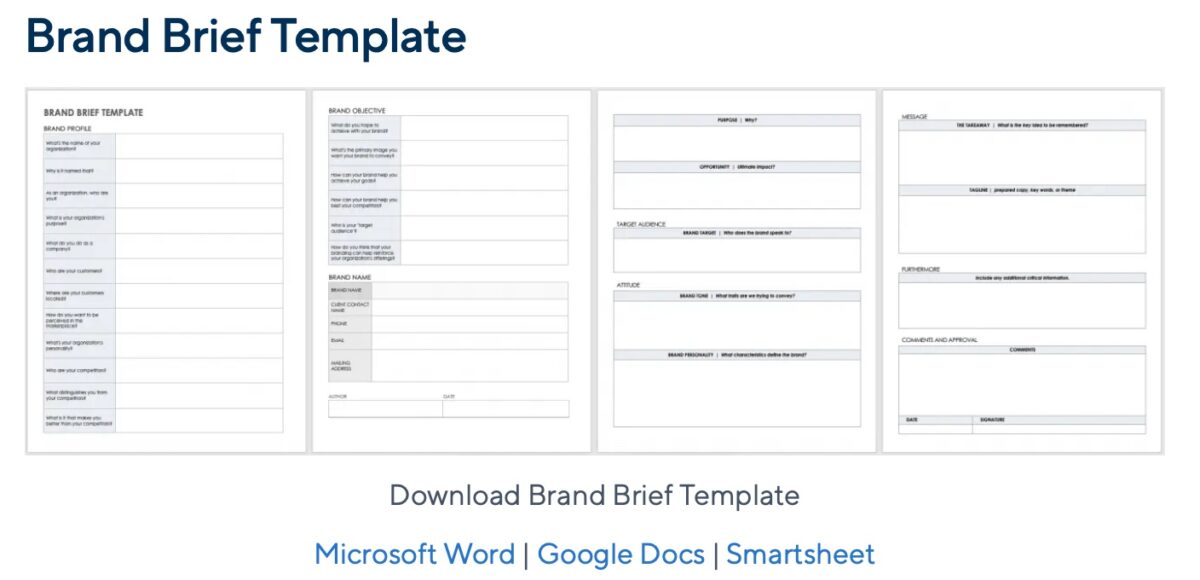
Companies like Smartsheet offer free brand brief templates to download at your leisure. We’re leaving you with no excuses here. But hey, we wouldn’t do it if it wasn’t important.
Defining your entire brand can be an overwhelming thing to cross off your to-do list. So, use our simple steps with examples and create a brief that you’re proud of.
Step one: mission statement
There are many parts to a brand brief. But you’re bound to get lost if you don’t start with a mission statement. Without one, it’d be like starting a film halfway through and trying to explain the plot.
Creating a formal declaration of your purpose makes it clear to everyone what you do and what you are trying to achieve. It’s essential for your brand image.
There are a number of ways you can get some inspiration:
- Speak to your employees and ask them to define your brand. What do everyone’s answers have in common?
- Why did you start your brand? Was there a problem that needed fixing or a service that needed providing?
- What is your long-term goal? What, ultimately, do you want to do?
Let’s look at an example of a mission statement we love. It comes from the revolutionary car manufacturers Tesla. Their message reads, “Accelerating the World’s Transition to Sustainable Energy.”

Why do we like it? Firstly, for the word play. Using “accelerating” of course makes us think of driving, but it also makes us think of the fast-paced development the brand is known for.
It tells consumers that Tesla uses sustainable energy. Consumers who value this now have a reason to stay loyal to the brand. Research says 56% of customers remain loyal to brands they believe “get them.”
The statement doesn’t just work for consumers, though. Tesla is also letting stakeholders and partners know that they are fulfilling their primary business goal of sustainability.
It establishes that Tesla plays a crucial role in the world’s energy. This provides the brand with a solid reputation and authority in the industry.
Not too shabby, eh?
Tesla went big. They combined their brand’s story, values, and ultimate brand promise to create a mission statement worth sharing. You can do the same.
It’s also a good idea to come up with a tagline, which is a memorable phrase that can be associated with your brand. It will be shorter than your mission statement, so easier for your audience to remember. In true Nike fashion, just do it.

So, now you have your winning idea. It’s a great start, but you have to know how to phrase it too. How are you going to give enough information, but keep it simple? How will you make the statement formal, but enjoyable?
There’s a fine line to walk. Here’s our advice:
- Avoid using jargon
- You can make it fun and give it personality
- Don’t get too specific (leave room for inspiration)
- Use clear, actionable language
To create a successful brand brief, you need to give meaning to everything you’re doing and producing. A mission statement is a great way to remember your purpose and keep everyone on track.
Step two: target audience
It doesn’t matter if you are a branding champion or a novice, you know the importance of your target audience.
These are the groups you are trying to reach with your deliverables, messages, and brand strategy. The fundamentals of any company.
You might be wondering what this has to do with your vision and values. But we’re here to tell you. It has a lot to do with it. Throughout the process of creating your brand brief, your customers should always be on your mind.
Everything in the brand brief has a purpose, and they all come back to the customer one way or another. Your company’s vision and values should always reflect the needs of the consumer.
So, to successfully showcase these visions and values, you need to be very clear about who you are targeting.
If you’re stuck on a way to find out who this is, there are several things you can consider:
- Conducting market research
- Creating polls for your current customers
- Researching who is interested in your competitors
- Using Google Analytics or social media insights
It makes sense to start with the usual demographics, such as age, gender, and occupation.
When you have a basic idea, try diving into psychographics to give you a deeper understanding of who you are dealing with. What lifestyle choices do you think they make? What opinions can you imagine them having?
The more comprehensive this is in your brief, the easier it will be to find out how and where you can reach your target market.
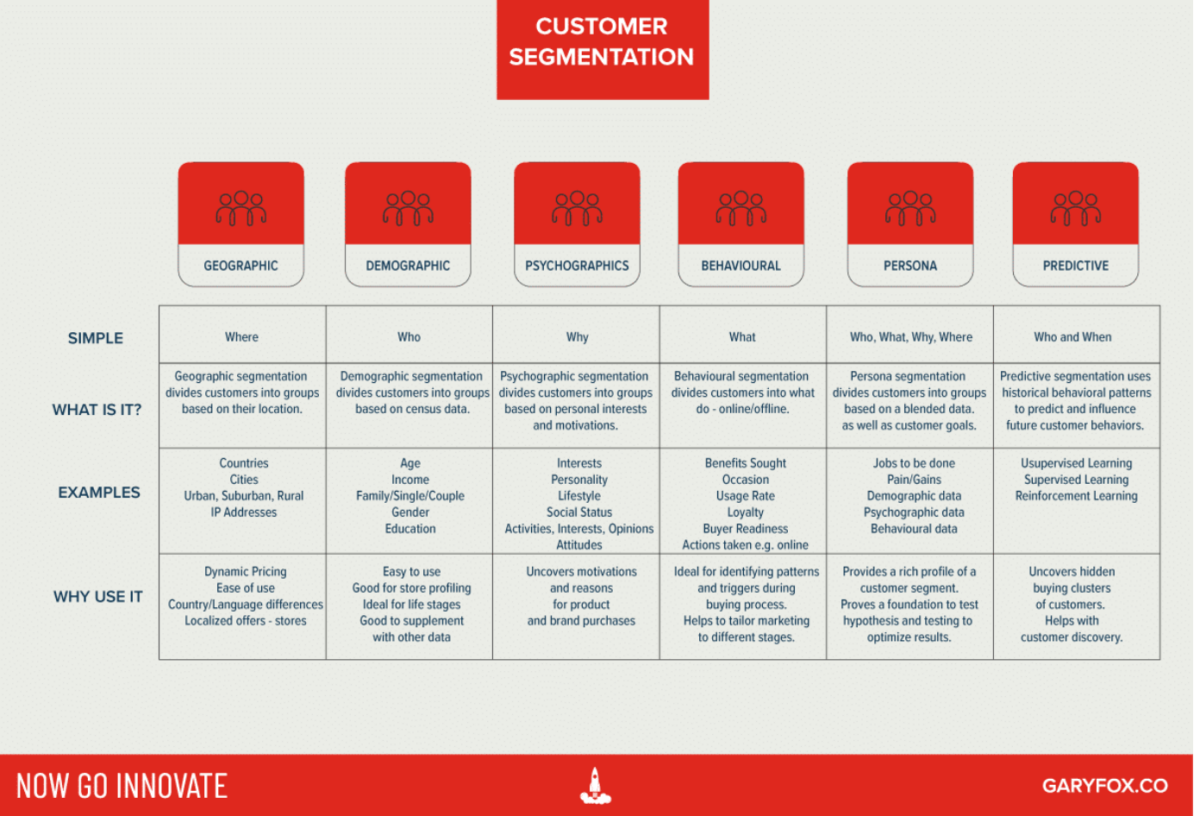
Once you’ve done this, it might feel a bit too broad. You won’t be able to offer personalized humanized marketing if you see your audience as one big entity.
To make this job a little simpler for yourself, you can segment your audience. By separating them into smaller groups based on shared characteristics, you better understand their individual needs.
It’s worth it. 63% of customers not only want but expect personalization as a part of your service.
You’ve done your research. Your vision and values align with your target audience. But a word of advice? Don’t just leave it there.
As you learn more about your target market, you might decide to change it. Do you remember Lucky Charms? The cereal brand was once a magical breakfast targeted towards kids.
However, times changed. The brand discovered that their marketing relied pretty heavily on nostalgia. Why? They found that 40% of their consumers are adults. No shame, we deserve a marshmallow breakfast too, but this meant they needed a change of focus.

Now, if you check out the Lucky Charms social media channels, you’ll find the promotion isn’t targeted towards parents or teenagers. It feels much more grown up with recipes and user-generated content created by adults.
Even if you don’t decide to change anything, the way our audience consumes evolves all the time. They might not fit into the pattern we’ve previously defined them in.
Moral of the story? Grow with your target audience. Never let them become a passive part of your vision.
Step three: brand values
So, we’ve found our target audience. But how do we get them to us? It’s time for brand values. You need to make sure you and everyone involved has a crystal clear idea of what your brand stands for.
As we mentioned before, consumers, particularly your target audience, need to be in the front of your mind during your branding process.
How do brand values do this?
- You can use them to construct how your audience views your company.
- Customers feel a connection to a brand if they share values. This means loyal customers with more retention.
- Aligning your target demographic with your products is one thing, but doing the same with values opens up more opportunities.
There are plenty of great examples out there, and delicious ones too. Ben and Jerry’s is a well-known ice cream business, but we also know them for their very strong values. It’s all over their packaging, social media, and branding.
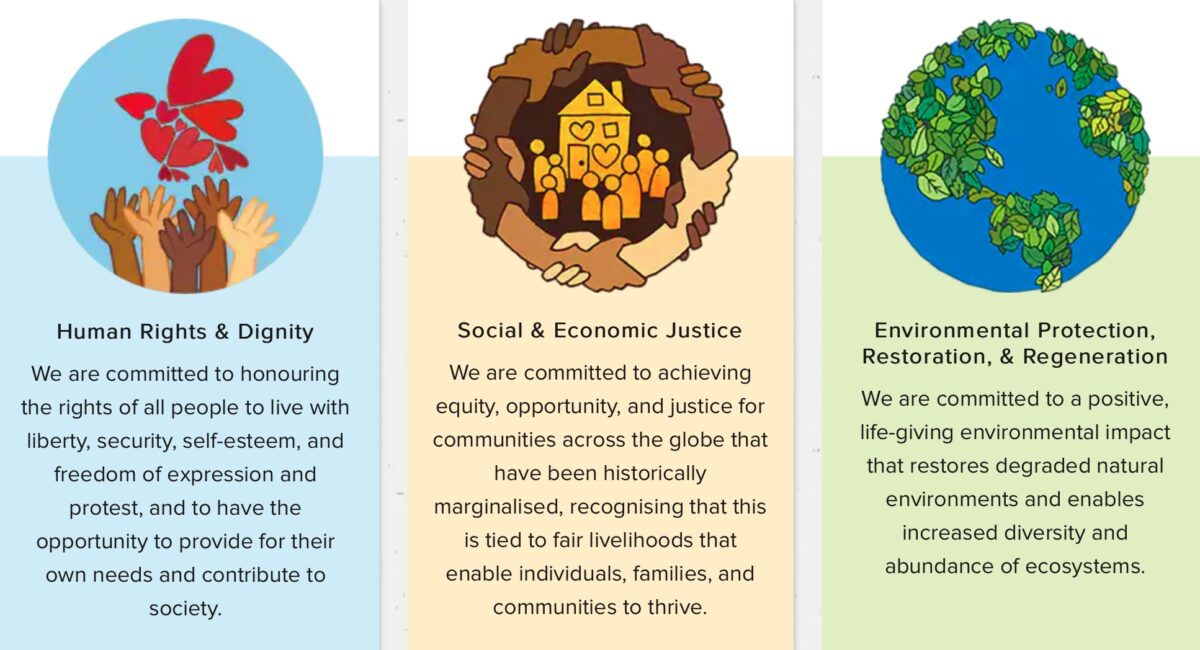
What does this mean? Naturally, Ben and Jerry’s attracts consumers who enjoy ice cream. That makes sense. But by projecting their core values, they engage with consumers who care about the same things.
Someone who cares about the environment is going to choose to buy from a company they know shares this passion.
A whopping 82% of potential customers want a brand’s values to align with their own.
Ben and Jerry’s brand values aren’t just part of their brand brief, they’re interwoven into everything. This is a great tactic if you want to show how much these values really mean to you. Prove to your audience that they aren’t just for show. Be authentic.
So, now you need your own. Go over your mission statement again. That’s what you want to achieve. Your brand values are guiding you to that goal.
Make a list of your values. Forbes suggests 4-5 are ideal for authenticity. Then narrow these down to your core values.
The most important thing? Clarity. Show off your values the same as you would your products. You’ll thank us for it.
Step four: design brief
Not to sound superficial, but what your company looks like matters too. While your brand guidelines should offer a closer look at your appearance, a design brief is integral too.
When you hear about guidelines and briefs, it all sounds a lot like the same thing. It’s easy to get confused. But it’s not the same thing.
Think of design brief versus creative brief as plan versus execution. Your design brief handles more of the business side of things rather than the art itself.
We aren’t talking logo design here. It’s instead going to explain how your plan will help you to accomplish your goals. It goes beyond brand design. It’s about finding solutions. Are you trying to increase conversions? Improve customer retention?
Whatever it is, those creative ideas need to be communicating your brand values. When starting a creative project, you aren’t just thinking about what looks good. You need something that looks like you.
One brand that utilizes graphic design to reflect their values is Minor Figures. The coffee company has a “mission focused on sourcing principles, carbon neutrality, and becoming a B-Corp”.
Their design team took this statement and ran with it. The result? A personalized branding project that stayed true to the company’s beliefs.
The packaging was designed by their in-house creative team, and they’ve definitely achieved their branding goals.
As a consumer, you look at this design and it tells you everything you need to know.
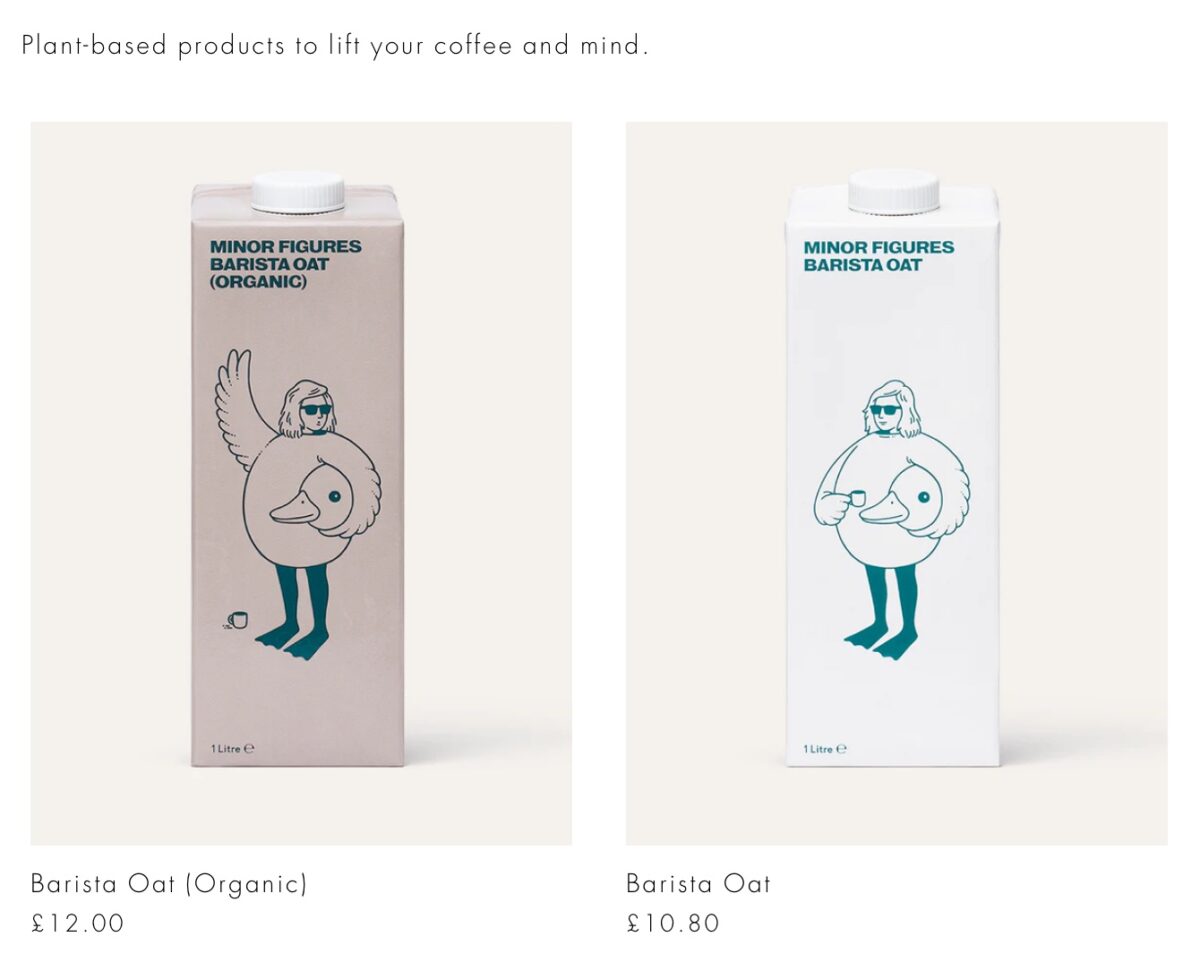
There are people on the packaging, which shows the product is made by people, not with animals. The animal costume suggests that the product is mimicking dairy.
The image of the cardboard carton highlights the fact they want us to remember: they are sustainable.
Consider your brand’s personality in the design process too. Minor Figures consider themselves to be a minimal, laid-back company. Their simple illustrations and muted palette make this known. The cool shades help too, we think.
If you’re struggling to write one yourself, you can find a design brief template online. Tools like Canva and Smartsheet will even offer you one for free. Using a brief example will help you to gauge what yours should look like.
Using a template is perfectly okay, as long as what’s in it reflects your values, vision, and you.
Step five: key competitors
The world of content marketing is vast, busy, and noisy. Consumers are spoilt for choice when it comes to choosing a product or service.
Your key competitors are a helpful tool in your brand brief. You can find them by getting your consumers to fill out polls or questionnaires. Through advertising, or searching for similar products or services to yours. By checking online reviews. Plenty of options.
You can’t always have a fresh, unique product or service. But if you have a value proposition that hasn’t been adopted yet, it’s as good as having a shiny new idea.
The key? Create a space in the market that hasn’t been created yet. And the most effective way to do this is to make sure everyone involved in your company knows what spaces have already been taken up.

There are plenty of reasons to be aware of your key competitors:
- Learning what works in your industry.
- Seeing what they’re missing and implementing them into your goals.
- Keeping up with what trends are worth investing in.
- Avoiding making the same mistakes as other companies.
- 57% of companies say that having a competitive advantage is one of their top priorities.
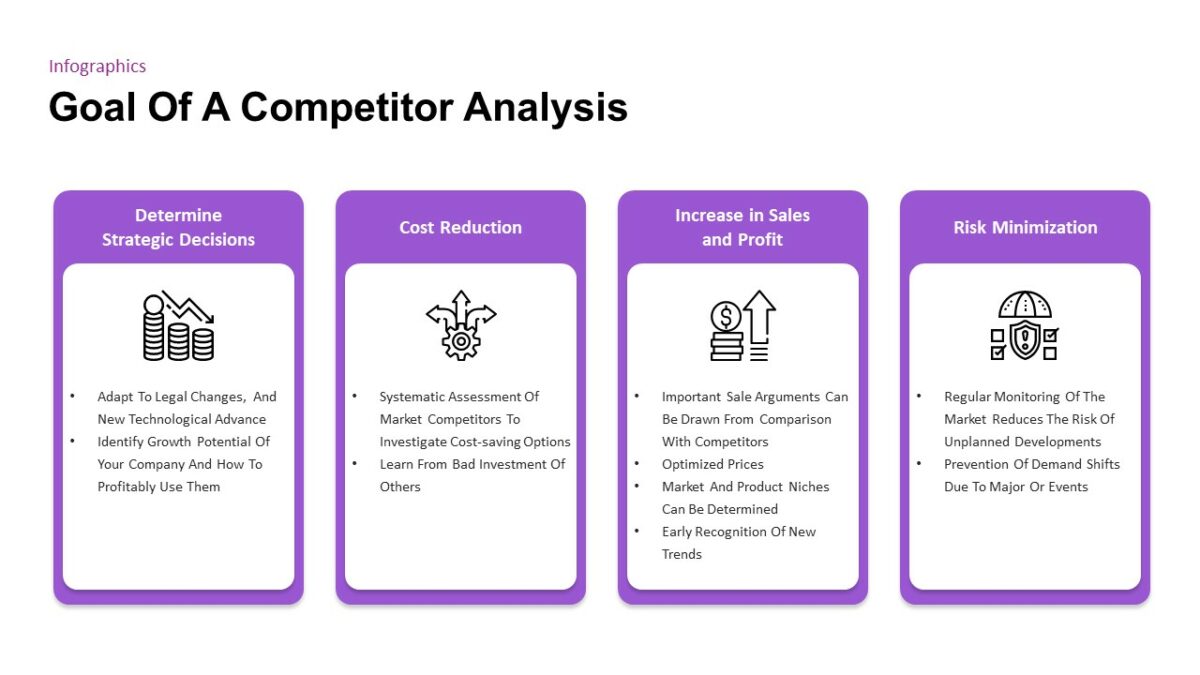
Now, consider what’s good to know and include these in your brief. As with everything else, the more detail you include in your brand brief, the more you’ve outlined your company.
Here are our examples:
- Of course, your key competitors. Find out their mission statement, values, preferred social platforms, target audience, and brand messaging.
- Your competitive advantage. Find your unique selling point to separate yourself from competitors.
- Segment the competitors. Who are you competing directly against, indirectly, and what company or platform can you see becoming competition?
- Write a value proposition of the measurable and clear benefits of your brand. Why should customers choose you over your competitors? Give yourself value and leave customers no choice but to choose you.
- Conduct a content gap analysis.
Whatever you’re producing probably isn’t that different. Instead, what matters is how you are perceived. That’s where your vision and values become important.
One of the best ways we become distinguishable from the competition is the display of our vision and values.
Consumers want to feel a connection with you. If they can see your company genuinely cares, they are way more likely to choose you. A study found 71% of consumers want to buy from companies aligned with their values.
Competition can be scary. But competitors aren’t going away, and the best thing you can do for your brand is embrace them. If you become an expert in your industry alternatives, they can become a marketing tool. Make them work for you.
A good briefing
Don’t forget, we are only as good as our brief. So, let’s make sure it’s a decent one right? Create a precise and detailed document that enlightens any reader on your company and its purpose.
We know it sounds like hard work, but we promise it’s worth it. Being able to define every aspect of your brand will be the gift that keeps on giving. Give your brand identity the personality it deserves.
As long as you have passion, your values and vision will shine through your brand brief. Think of it as a love letter to your work.









